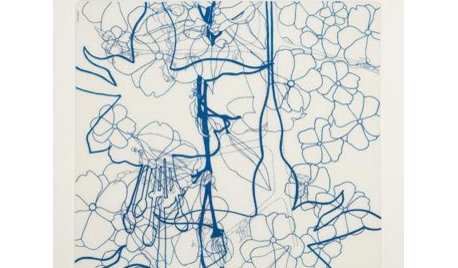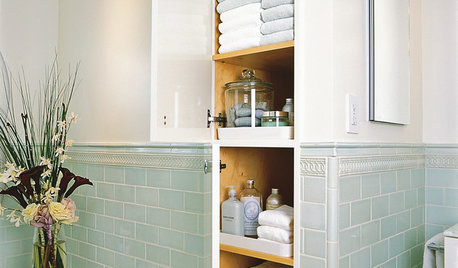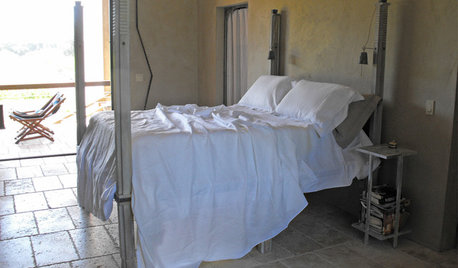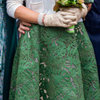Cleaning cloth napkins and placemats?
MtnRdRedux
8 years ago
last modified: 8 years ago
Featured Answer
Sort by:Oldest
Comments (49)
Fun2BHere
8 years agoNothing Left to Say
8 years agoRelated Discussions
Favorite everyday cloth napkins?
Comments (32)I stopped stocking paper towels couple of years ago and only keep it on hand for a couple of things now, but I don't think I could give up paper napkins. My kids are just too messy, which is suddenly a little embarrassing because my kids are not that little. I do have a lot of different brands of cloth napkins I use for Sunday dinners and when we have people over, but they drive me crazy because they always seem wrinkled. Surprisingly, I bought 20 of the "wrinkle free" brand at Walmart for a last minute get together and they are not only the least expensive by far, but the least wrinkly napkins I've ever owned. All of my others are now up high in the back of the pantry. I have one other set that stay pretty nice right out of the dryer, but my mom gave them to me and they don't have tags so i have no idea where they are from. I do know they are thicker than any of my other napkins, and they are woven, and very soft. They would probably be my next favorite except I only have 4 of them. They are definitely not linen, though. My guess is they are some kind of polyester, which probably isn't especially green. My mom always used cloth napkins and placemats and they were taken to the laundry room after every meal. She had a set for every day of the week and then some, so on laundry day she washed them all at once with dishtowels, etc. She also ironed all of her napkins. And pillowcases. Rephrase: it was one of my chores to iron all of the napkins and pillowcases, which is why as an adult I bought chiliwhich placemats and paper napkins. And I have never ironed a pillowcase in my adult life. I promise I do help the earth in other ways ;)...See MoreFluff post: prints on paper towels, napkins
Comments (38)I don't think I've even seen printed paper towels in a couple of years. I usually only order online at Target or Walmart so they will ship them and I get free shipping or I buy them at Target. I've always been cautioned to buy white toilet paper because the dyes cause problems for some women. I either have that shipped or buy at Costco. I only buy Kirkland brand or Scott brand although I currently have a case of Charmin because my neighbor gave me her stuff when she moved....See MoreISO cloth napkins like these, but available in the US
Comments (50)Hi Sandplus, That is cloth in my photo above -- but maybe you mean one with more white? Anyway, I ended up buying "napkin rings" from Etsy. The napkins rings were 50 cents each. I got napkins at Pier 1; they were the ones I liked best on line and in person they did not disappoint. The napkins were $3.71 each (versus $15.26@ for the British ones). I ended up getting some salad plates, too, for $3.88@. I looked first at Goodwill because so many people are getting rid of their china, I figured i might find something interesting. I didn't find anything that would work, and plates were cheaper at Pier 1, LOL. I do not really need plates but WTH, so cheap and the color works well. When I am done with them I can always donate them to Goodwill! I also bought a beautiful set of Alphabet cards for a new baby in the family. I was looking for someone who did fine printing like the napkins at the top of my post, and was reminded of a local co that makes gorgeous notecards (but alas nothing on fabric). While on her site, I just fell in love with her alphabet cards! http://www.saltboxpress.com/alphabet-cards/...See MorePlacement, tablecloth, and cloth napkin sources?
Comments (20)I need to pare back as we don't entertain as much as we did formerly, but when I start to sort through them, I have a hard time choosing which ones to give away. I suspect when we find the perfect smaller home for our later years, I will have to make the hard decisions, but I can wait until then....See Moremaire_cate
8 years agoAnnie Deighnaugh
8 years agoMtnRdRedux
8 years agoBumblebeez SC Zone 7
8 years agoMtnRdRedux
8 years agolast modified: 8 years agoBumblebeez SC Zone 7
8 years agolascatx
8 years agoNothing Left to Say
8 years agocarolb_w_fl_coastal_9b
8 years agobpath
8 years agodeegw
8 years agojoaniepoanie
8 years agotishtoshnm Zone 6/NM
8 years agograywings123
8 years agoOutsidePlaying
8 years agolast modified: 8 years agoBumblebeez SC Zone 7
8 years agokittymoonbeam
8 years agoUser
8 years agoMtnRdRedux
8 years agoUser
8 years agolast modified: 8 years agoWalnutCreek Zone 7b/8a
8 years agoAnnie Deighnaugh
8 years agolast modified: 8 years agoUser
8 years agoMtnRdRedux
8 years agolast modified: 8 years agolizbeth-gardener
8 years agoMtnRdRedux
8 years agorococogurl
8 years agodeegw
8 years agolast modified: 8 years agoAnnie Deighnaugh
8 years agoUser
8 years agoUser
8 years agoUser
8 years agolast modified: 8 years agorosesstink
8 years agoUser
8 years agoUser
8 years agosuero
8 years agoAnnie Deighnaugh
8 years agoUser
8 years agoZiemia
8 years agolast modified: 8 years agokittymoonbeam
8 years agoMtnRdRedux
8 years agoBumblebeez SC Zone 7
8 years agoMtnRdRedux
8 years agorosellen_crow
5 years agol pinkmountain
5 years agolast modified: 5 years agoLars
5 years ago
Related Stories

PRODUCT PICKSGuest Picks: 20 Entertaining Placemats for Kids and Adults
Make mealtimes more fun with placemats that start conversations, keep kids engaged or dazzle with color
Full Story

HOUZZ TOURSHouzz Tour: An Eclectic London Townhouse Cleans Up
White finishes strategically juiced up with color give a newly renovated Victorian graphic style
Full Story
LAUNDRY ROOMSMake a Clean Break With Laundry Chaos
Bins and bags, sorters and other storage — we've got several loads' worth of ways to keep your laundry neat
Full Story
HOUSEKEEPINGTackle Big Messes Better With a Sparkling-Clean Dishwasher
You might think it’s self-cleaning, but your dishwasher needs regular upkeep to keep it working hard for you
Full Story
HOUSEKEEPINGHow to Clean Marble Countertops and Tile
Acidic solutions can damage your marble surfaces. Here’s how to keep marble looking clean and amazing
Full Story
HOUSEKEEPINGGet It Done: Clean Out the Linen Closet
Organized bliss for your bedroom sheets and bathroom towels is just a few hours away
Full Story
HOUSEKEEPINGThe Quick and Easy Way to Clean a Microwave
All you need is water and a couple of other natural ingredients to get your appliance sparkling and smelling fresh again
Full Story
HOUSEKEEPING7-Day Plan: Get a Spotless, Beautifully Organized Dining Room
Give us a week and we’ll give you a dining room you’ll be happy to use for a special occasion or every day
Full Story
PRODUCT PICKSGuest Picks: Loving Linen All Over the Home
Charmingly rumpled or ironed smooth, these linen finds from napkins to curtains bring casual elegance to rooms
Full Story





rococogurl